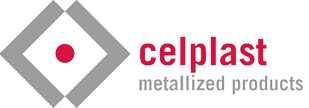Dante Ferrari
Celplast Metallized Products Ltd.
Presented at The AIMCAL Fall Technical Conference
October 18 – 21, 2009
Sustainable Packaging Drivers
In the absence of a consensus among consumers and legislators, major retailers, particularly Wal-Mart in the North American market, are driving the sustainability agenda. Their Packaging Scorecard and recently unveiled Sustainable Products Index provide a roadmap to brand owners and converters as to how they will be graded on the sustainability of their products and packaging.
Brand owners have responded in different ways, but in general there are three main areas of focus:
- Reducing the amount of packaging used & landfilled
- Reducing plant waste (energy, water, etc.)
- Reducing CO2 emissions
When we look at flexible packaging compared to other packaging formats, it stacks up well along most metrics of interest to Wal-Mart and brand owners. Converters have been busy developing their own comprehensive sustainability programs, including sophisticated measurement tools and hard targets. In general, there are two main areas of focus:
- Driving waste out of operations (material, energy, GHG emissions, etc.)
- Innovating and bringing new products to market to meet the needs of brand owners
Reducing Material Usage, Improving Landfill Diversion
As reported previously1, the barrier properties of metallized film are almost independent of the base film gauge. This is verified in Figure 1, which shows OTR & WVTR values of three different PET gauges, all metallized on the non-treated side under similar metallizing conditions and at a 2.3 target OD. Error bars represent 95% confidence intervals based on several measurements on each base PET gauge. These have been updated to include newer barrier data generated in the past 12 months. When compared to 48 g metallized PET, 40 g metallized PET has 17% less material in the barrier layer, and for a typical 3-ply packaging structure of 48 g PET/48 g m-PET/1.5 mil LLDPE, this represents a 3% material reduction in the overall structure.
To Continue Reading:
Download the Full Technical Paper:
What Sustainable Packaging Means to Brand Owners, and What we can Do About It

